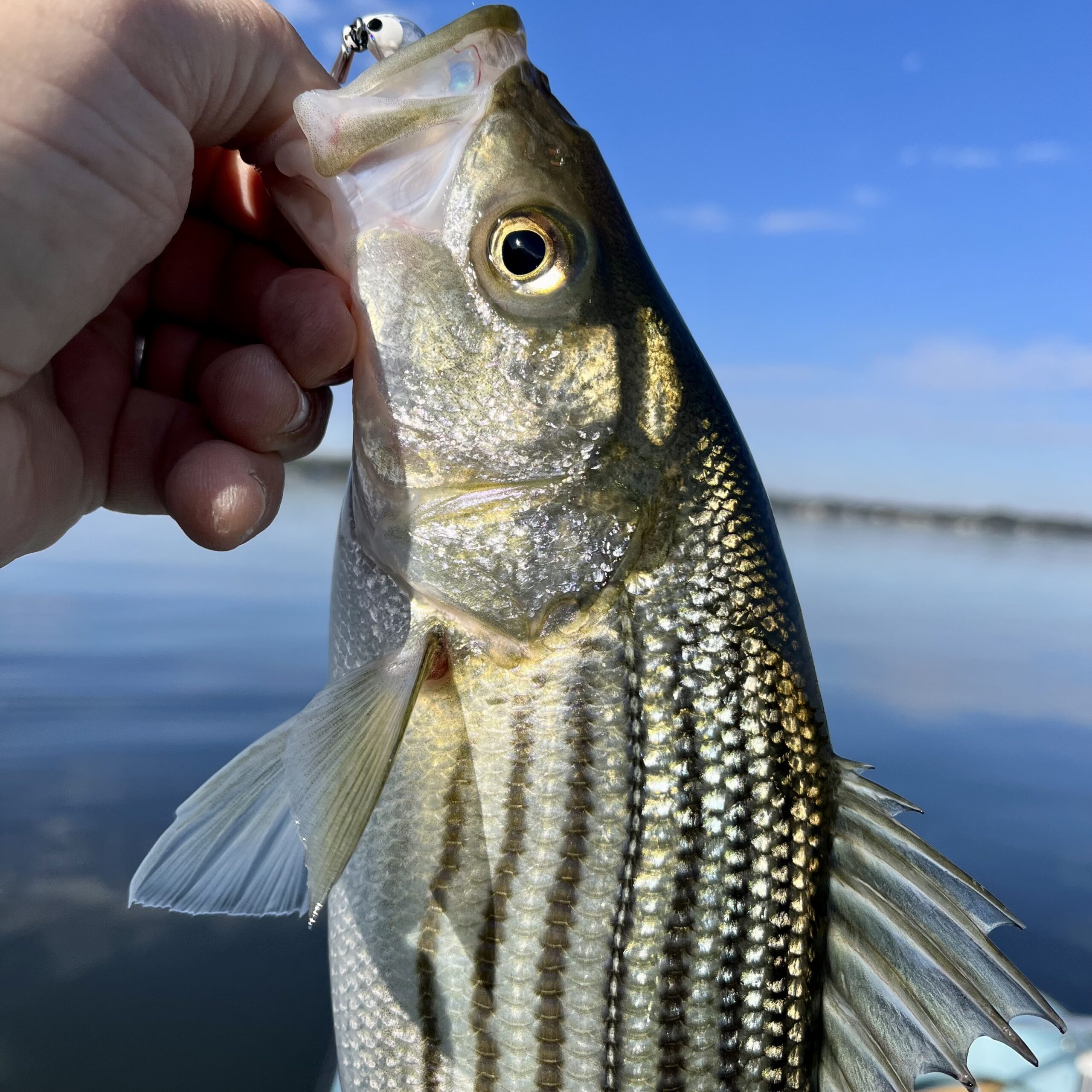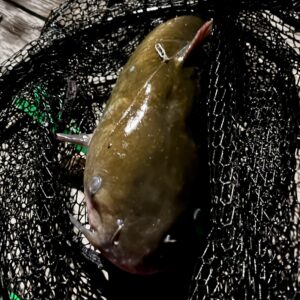If you want to know whether or not striped bass will bite after a rain front drenches the region, you simply have to get on the water and fish for them. Google “Do fish bite better before or after a storm?” and the answers will frustrate you. Some say before (heavy feeding before hunkering down and weathering out the storm), while others suggest after (water bodies are stirred up and active). Do fish actually sense barometric pressure and care about the rain? Who knows with certainty? The answers simply come down to your own willingness to give fishing a try before, during, or after a rain front. Which brings us to this past week-plus of fishing the Chesapeake Bay tributary, the Severn River.

After the deluge of rain that Tropical Storm Ian dumped on the Mid-Atlantic, our neck of the woods near Annapolis, Maryland, finally saw some sunshine and calm-enough conditions on the water to give fishing a try. The winds on Sunday, October 9th were a touch above mild at about 10 to 15 knots and the air temperature at daybreak was a very, very chilly 40F. Being about 48 hours removed from the rains, the river seemed adequately settled to give the topwater bite a try. At dawn, I visited my usual spots along shallow sandbar points and flats adjacent to deeper water that jutted toward the main channel of the river. With a slight chop on the water’s surface, I opted for a popper—the Stillwater Smack-It, Jr. in a holographic green/blue/silver job. But cast after cast, there were no takers. Of note; the tide seemed ideal with a strong ebb from high 1.2′ to 0.5′ low.
Thinking the fish may hit subsurface lures, I gave the Rapala Shadow Rap Shad in silver a workout, in and around the points. No takers.

This had me a bit befuddled, so I switched gears entirely and moved toward a line of deep-water boat docks and worked a bucktail swim jig under and around each dock. By this time, the sun was high, the sky blue, and pockets of shade my casting targets. This jig was a 1/2oz in weight and ideal for skipping the docks, letting it drop to bottom, and lightly jigging back. At this time last year, this pattern yielded several chunky stripers in the mid-20″ range. Today, however, the fishing was slow and methodical, producing just one solid striped bass—a healthy 19-20″ schoolie. A fun thing to play for a minute before slipping her back into the drink. This day was done. Not much to get excited about, but not a skunk.
Four days later, the weather forecast called for a one-day rain front to pass through the region on Thursday (all day into the night). Friday, October 14th, morning conditions would be clear and calm for an outing in the boat, though. Launching a touch after dawn, at about 8 a.m., I steered the boat toward my favorite spots, yet again, in hopes of playing topwater and subsurface patterns. This time, I began with a Shimano ColtSniper Walk, which has become my go-to topwater lure for dead calm water conditions (tide was weak flood to slack). There was barely a whisper of a breeze at 5 knots, give or take a knot, and the cloud cover was at about 75 percent. Thick clouds covered the sun. Surely, the topwater bite would be bodacious into the ninth, tenth hour of the day? But…no takers.

Once again, my intuition gravitated to subsurface lures and I gave the Shadow Rap Shad the heave-ho. Over and over, around and around, I threw the bait, covering my go-to spots. Still no takers.
The decision was thus made—to the docks! And to the docks I went, again hitting the run of piers that had seen schoolie success in the recent past. The first run was for naught and thinking that I simply was off the fish—meaning, they were elsewhere altogether—I ran a 1/2 mile directly across the river to another line of docks and plied them thoroughly. Finally, a frisky striped bass hit the swim jig just as I bounced it off the river bottom. The jig was casted parallel to the pilings on the shaded side. I worked the full run of docks with the jig, as well as the shallower water between them with the Shadow Rap Shad, thoroughly and with confidence. I felt good about my casts, which were mostly clean and on point. But no more takers.

Two mornings, both post rain front. Neither saw the normal, aggressive topwater behavior of the stripers. Even subsurface at well-regarded and usually-active fishing spots didn’t produce. The fallback option of skipping bottom baits under and around docks, however, did score hits, if only minimally so. The fish seemed finnicky overall, perhaps turned off by the two cold rain fronts that—oh by the way—sandwiched October’s Full Moon.
It’s always the moon, stars, rain, cold, and heavens above that keep the fish from biting on difficult days. It couldn’t possibly be the angler…right? See ya’ll on the water again, real soon!




